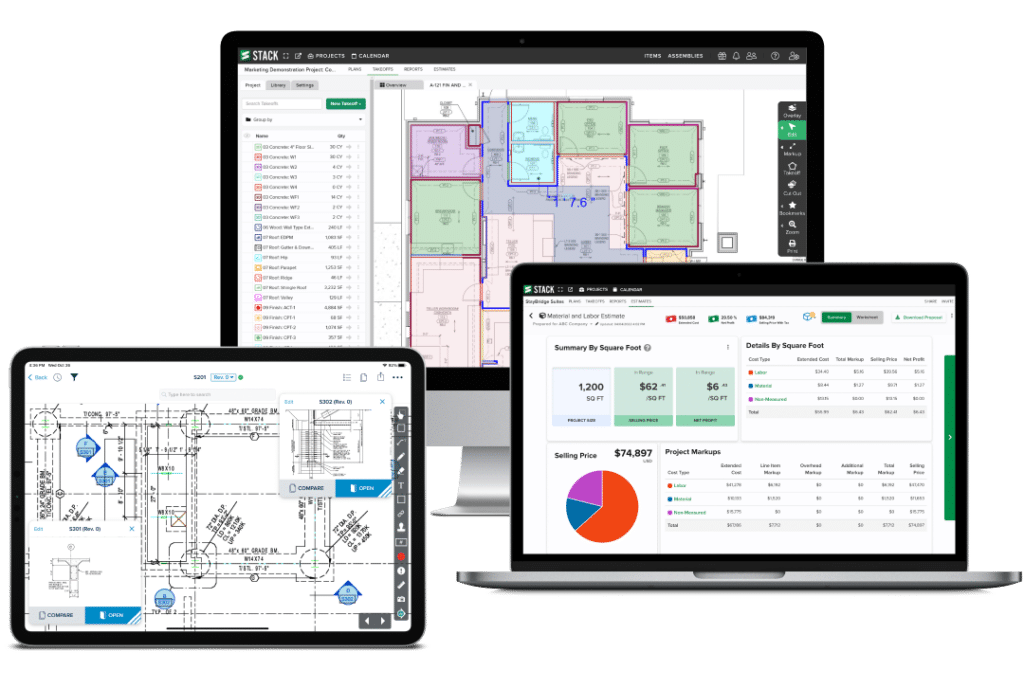
In the fast-paced, complex environment of the construction industry, the ability to maintain seamless connectivity between the field and back office is key. For construction executives, this connectivity is not just a luxury—it is a critical component of effective project management. By ensuring that data flows freely and accurately between jobsites and the back office, construction companies can significantly improve communication, reduce errors, mitigate risks, and produce more accurate reporting at project closeout. This ultimately leads to better decision-making, enhanced productivity, and increased profitability.
1. Improving Communication
Communication is the backbone of any successful construction project. The field and the back office represent two distinct operational environments that must work in tandem to ensure project success. For construction executives, who are responsible for overseeing multiple projects and ensuring they stay on schedule and within budget, the ability to facilitate clear and timely communication between these two areas is essential.
Connectivity enhances communication by providing real-time data sharing, which allows for immediate updates on project progress, potential issues, and resource needs. When the field and the back office are connected through integrated software platforms or cloud-based systems, information such as project timelines, material deliveries, and workforce allocation can be instantly communicated. This reduces the likelihood of misunderstandings or delays caused by outdated or incomplete information.
Moreover, improved communication between the field and the back office empowers construction executives to make informed decisions swiftly. When a problem arises on-site, such as a design discrepancy or a safety issue, immediate communication enables quick resolution, minimizing downtime and keeping the project on track. In contrast, a lack of connectivity can lead to communication breakdowns, where critical information is delayed or lost in translation, potentially resulting in costly project delays or safety incidents. See how CentiMark streamlined collaboration and improved business operations with STACK.
2. Reducing Errors Due to Manual Data Entry
Manual data entry has long been a source of errors and inefficiencies in construction management. For construction executives, these errors can have significant consequences, leading to cost overruns, schedule delays, and even legal disputes. The disjointed nature of traditional data entry processes, where field personnel manually record information that is later re-entered by office staff, is inherently prone to mistakes. These errors can include incorrect quantities, missed entries, or misinterpretations of handwriting.
Digital connectivity between the field and the back office virtually eliminates the need for redundant data entry. By utilizing mobile devices, tablets, and specialized construction management software, field teams can input data directly into the system, which is immediately accessible by the back office. This not only saves time but also ensures that the data is accurate and up to date. Automated data entry reduces the likelihood of human error, ensuring that the information used by construction executives to make critical decisions is reliable.
For example, when a change order is issued on-site, the details can be instantly updated in the system and reflected in the project budget, schedule, and reports. This level of accuracy is crucial for executives who need to track project performance closely and make adjustments as necessary. By reducing errors due to manual data entry, construction companies can avoid the costly repercussions of inaccuracies and ensure smoother project execution. See how Ecotone improved productivity when they eliminated manual processes.
Bid Faster. Win More. Build Smarter.
Get your FREE account today to:
- Increase Team Efficiency
- Complete Estimates Faster
- Generate More Revenue

3. Mitigating Risk
Risk management is a fundamental concern for construction executives, who must navigate a landscape filled with potential hazards, including safety issues, financial risks, and legal liabilities. Connectivity between the field and the back office plays a vital role in mitigating these risks by enabling proactive management and response.
One of the primary ways connectivity helps mitigate risk is by enhancing safety management. When field teams can instantly communicate safety concerns, incidents, or near-misses to the back office, construction executives can take immediate action to address the issue. This might include revising safety protocols, providing additional training, or mobilizing resources to resolve a hazard before it escalates. The ability to capture and analyze safety data in real-time also allows executives to identify trends and implement preventive measures, reducing the likelihood of future incidents.
Financial risk is another critical area where connectivity proves invaluable. By maintaining real-time visibility into project costs, expenditures, and budget forecasts, construction executives can identify potential financial issues early on. For instance, if material costs are trending higher than anticipated, executives can adjust procurement strategies or reallocate resources to stay within budget. The ability to access data in the cloud also reduces the risk of data loss, which has extreme financial implications. See how Exterior Wholesale Supply narrowly avoided disaster and why they switched to STACK.
Furthermore, connectivity enables better compliance with regulatory requirements and standards. By maintaining accurate, up-to-date records that are easily accessible, construction companies can more readily demonstrate compliance in the event of an audit or inspection. This reduces the risk of fines, project delays, or damage to the company’s reputation.
4. More Accurate Reporting at Closeout
The closeout phase of a construction project is critical, as it involves finalizing all project details, ensuring that all contractual obligations have been met, and handing over a complete and accurate set of documentation to the client. For construction executives, accurate reporting at closeout is essential not only for satisfying client expectations but also for maintaining the company’s reputation and securing future business.
Connectivity between the field and the back office is key to producing accurate and comprehensive reports at closeout. Throughout the project lifecycle, data is continually collected, updated, and stored in a centralized system. This includes everything from daily reports and material inventories to financial records and compliance documentation. When it comes time to close out the project, construction executives can easily access this data, ensuring that all aspects of the project are accurately represented in the final reports.
Moreover, the ability to generate real-time reports throughout the project allows executives to track progress and address any issues before they become significant problems at closeout. For example, if there are discrepancies between the planned and actual costs, or if certain deliverables have not been met, these can be identified and rectified early, reducing the likelihood of surprises during closeout.
Accurate reporting at closeout also supports better client relationships. Clients appreciate transparency and a clear account of how the project was managed, including any challenges that were encountered and how they were addressed. By providing detailed and accurate reports, construction executives can demonstrate the company’s professionalism and commitment to quality, which can lead to repeat business and positive referrals. See how Stonebrook Exterior uses STACK’s superior reporting to analyze what types of projects to focus on.
For construction executives, maintaining connectivity between the field and the back office is crucial to successful project management. Improved communication ensures that all stakeholders are on the same page, reducing the risk of misunderstandings and delays.
By eliminating errors associated with manual data entry, connectivity enhances data accuracy, leading to better decision-making and smoother project execution. Additionally, the ability to proactively manage risks through real-time data sharing significantly reduces the potential for costly incidents.
Finally, accurate reporting at closeout, enabled by continuous connectivity, not only satisfies client expectations but also solidifies the company’s reputation for delivering high-quality projects. In an industry where time, cost, and quality are of the essence, and margins are razor-thin, the importance of connectivity between the field and the back office cannot be overstated.








